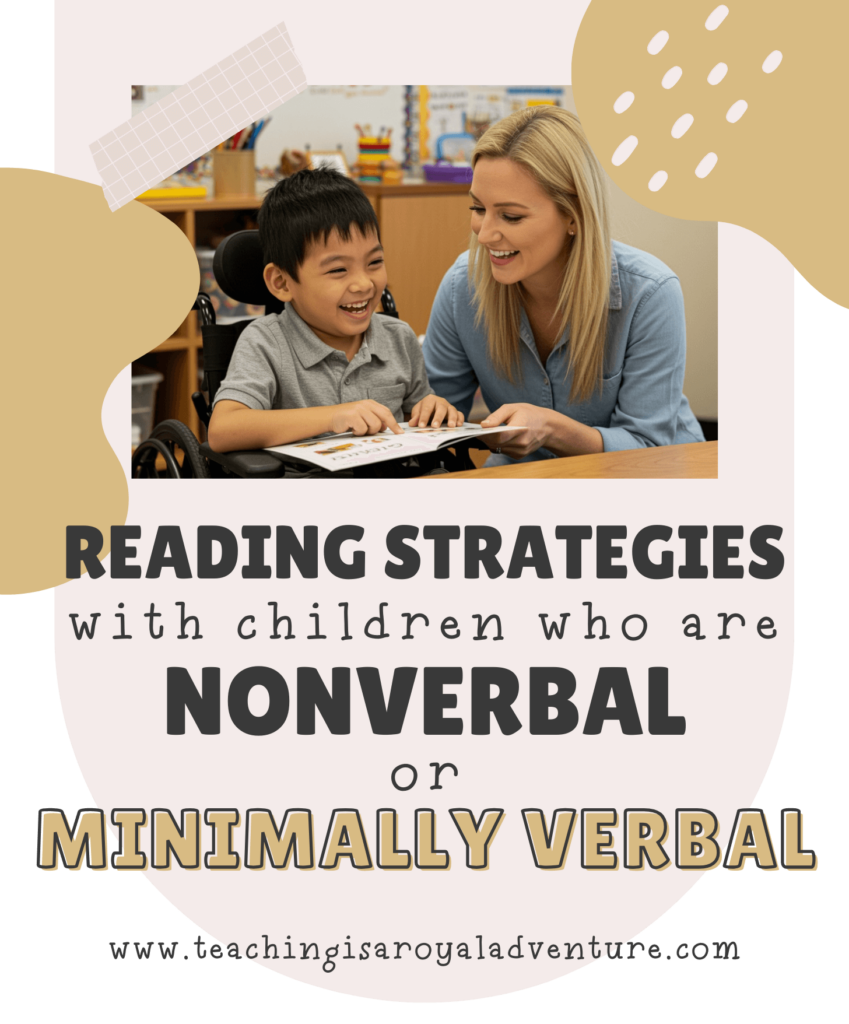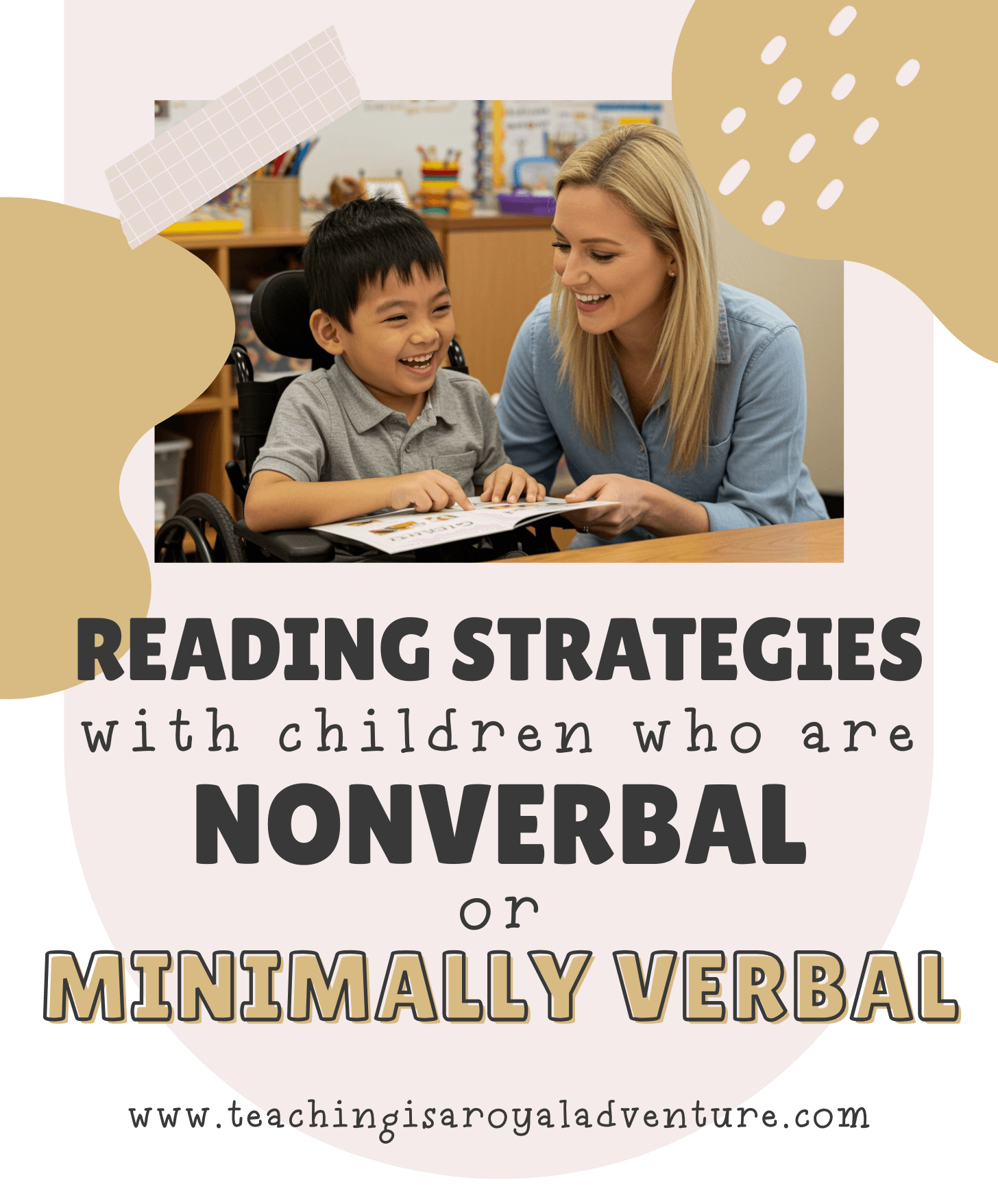You don’t need words to make reading powerful. Here’s how to connect through storytime—no matter your child’s language level.
Reading is a beautiful way to bond, inspire imagination, and build early literacy skills—but for parents and caregivers of children who are nonverbal or minimally verbal, storytime can feel intimidating or uncertain. You might wonder: Will they understand? Are they benefiting? How can I keep them engaged?
The truth is: language isn’t a requirement for connection. Children who are nonverbal or minimally verbal still gain so much from being read to. Their brains are building pathways. Their hearts are connecting with yours. Storytime becomes about so much more than the words on a page.
In this post, we’ll explore how to make reading powerful, engaging, and joyful—even without spoken responses. Whether you’re a parent, teacher, or caregiver, these tips can help you build literacy skills while honoring your child’s unique communication style.
Why Reading Matters for Nonverbal Children
Reading is more than decoding letters—it’s a multisensory, relational experience. Here’s what research and experience tell us about reading with children who are nonverbal or minimally verbal:
- Language is absorbed through listening. Children who don’t speak still can process sounds, rhythms, and patterns in speech.
- Reading supports receptive language development (what children understand), even if expressive language (what they can say) is limited.
- Books create predictable routines, helping children feel safe and supported.
- Storytime builds connection and attention, two cornerstones of communication.
- Visual and tactile elements of books support engagement and learning.
In short, your child doesn’t need to speak to enjoy—and benefit from—books.
7 Strategies for Reading with Nonverbal or Minimally Verbal Children
1. Choose Interactive and Visual Books
Books with bold illustrations, textures, flaps, or sounds are excellent choices. Look for:
- Board books with textures to touch and explore
- Lift-the-flap books to spark curiosity
- Repetitive, predictable stories like Brown Bear, Brown Bear or Dear Zoo
- Books with real photos (especially of animals, food, or people)
Here is a list of my favorite interactive books for nonverbal toddlers. (coming soon)
2. Use Exaggerated Facial Expressions and Gestures
Children who are nonverbal often rely heavily on visual cues. So lean in:
- Make your face animated—smile, raise your eyebrows, make “surprised” eyes
- Use gestures to act out what’s happening in the story
- Point and trace words or pictures with your finger
- Nod, pause, and wait—these silent cues help your child track the rhythm of conversation
It may feel silly at first, but your expressions become the “voice” of the story.
3. Pause for Participation—Even if It’s Silent
Storytime isn’t a one-way street. Even if your child doesn’t speak, they can still engage.
- Wait after a sentence—see if your child turns the page, looks at a picture, or reaches
- Use visual supports or AAC devices if your child uses them
- Offer choice questions (“Do you want this book or that one?”) and observe eye gaze or pointing
- Encourage nonverbal cues like clapping, tapping, or signing
When you pause and give your child a wait time, you send the message: Your voice matters—even if it’s not spoken.
4. Make It a Sensory Experience
Many nonverbal children benefit from multisensory learning. Try:
- Reading in a cozy space with weighted blankets or soft lights
- Letting them hold a favorite fidget or sensory toy during the book
- Choosing books with scratch-and-sniff, texture patches, or buttons
Engaging more than one sense can reduce anxiety, increase attention, and make the story come alive.
5. Build a Routine—but Stay Flexible
Consistency helps build trust and understanding. Try reading:
- At the same time each day (e.g., after lunch or before bedtime)
- In the same space with familiar books nearby
Over time, this routine becomes a predictable invitation to engage. But also stay flexible! Some days your child may just want to flip pages or snuggle beside you. That’s okay. It’s the presence—not the performance—that counts.
6. Name Emotions, Actions, and Sounds
Even if your child isn’t labeling things yet, they’re still learning what words mean. So:
- Name emotions (“The bunny is happy!”)
- Label actions (“Look, the dog is running!”)
- Imitate sounds (“Moo! Quack! Vroom!”)
Every word adds to their mental dictionary. Over time, these connections support both language comprehension and expression—even if it’s not verbal.
7. Celebrate All Communication
If your child points to a picture, turns the page, touches a texture, or makes a sound—they’re communicating.
- Mirror their actions
- Match their energy
- Respond with excitement
When you show that their communication matters, you open the door to deeper engagement and learning.
Storytime Isn’t About Talking—It’s About Connecting
Reading with a child who is nonverbal or minimally verbal isn’t about “getting through” a book. It’s about being together. Sharing smiles. Hearing the rhythm of your voice. Feeling safe and seen in a quiet moment.
You are doing something powerful when you read, even if your child never says a word back.
So don’t wait until they “understand more” or “can talk.”
The magic of storytime is already happening.
Bonus: Favorite Books for Nonverbal and Minimally Verbal Children
Here are a few tried-and-true favorites that engage children through visual storytelling, repetition, and sensory play:
- Brown Bear, Brown Bear, What Do You See? by Bill Martin Jr. & Eric Carle
- Touch and Feel: Animals by DK Publishing
- Dear Zoo by Rod Campbell
- Baby Loves Books: The Five Senses by Ruth Spiro
- Where’s Spot? by Eric Hill
- Peekaboo Morning by Rachel Isadora
You can find more recommendations in our upcoming post: “Top 10 Books for Children with Limited Verbal Skills”
BE SURE TO SAVE THESE READING STRATEGIES TO YOUR FAVORITE PINTEREST BOARD FOR LATER.

Final Thought
Whether your child speaks many words, few words, or none at all—you are planting seeds. Every book, every cuddle, every silly sound builds brain connections, language skills, and a deep sense of love.
And that’s something no words could ever fully capture.
